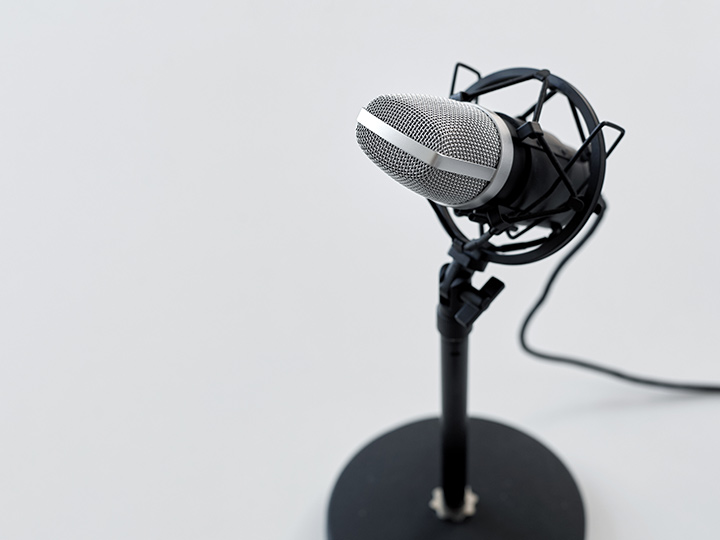1. Carbon Microphone
Carbon microphones have a narrow frequency response range, low impedance, and are prone to distortion, and only some phones are still using these types of microphones.
2. Crystal and ceramic microphones (piezoelectric microphones)
The frequency response is good (80Hz ~ 7kHz), the impedance is high, the output level is high, and the price is cheap.
3. Condenser microphone
A condenser microphone consists of three parts: a capsule, a preamplifier and a power supply (as shown in Figure 1). The polar head is composed of a diaphragm and a plate. The diaphragm is one electrode of the capacitor, making it the simplest capacitor. When the sound wave in the sound field makes the diaphragm vibrate, the distance between the diaphragm and the fixed rear plate changes accordingly, so that the capacitance also changes. When the changed capacitance passes through the load resistance, an AC voltage that changes with the sound pressure is generated. The built-in preamplifier amplifies the output signal voltage. The advantages of condenser microphones: good frequency characteristics, flat frequency characteristic curve; large output signal level and low distortion; no directionality, high sensitivity, and good transient response performance. The disadvantages are: the working characteristics are not stable enough, and the low-frequency sensitivity decreases with the increase of use time. When working, the polarized voltage and preamplifier in the condenser microphone need DC power supply, which makes it inconvenient to use. Now the +12V or +48V phantom power supply basically configured on the mixer is to supply the condenser microphone to work. Although some condenser microphones can install batteries in the microphone, they are bulky and heavy, which makes them inconvenient to use.
The moving coil microphone is a widely used microphone. When the microphone picks up the sound, the thin diaphragm moves, the diaphragm drives the coil to vibrate, and the coil in the magnetic field converts it into an electronic signal, which is then sent to the tuning. processing (as shown in Figure 2). Its advantages: good frequency characteristics, flat frequency characteristic curve in the frequency range of 50Hz ~ 15000Hz; good directivity and low noise; no need for DC power supply, easy to use and reasonable price.
4. Wireless Microphone
The wireless microphone transmits the sound signal by using the wireless channel, and its system is divided into the transmitting part and the receiving part (as shown in Fig. 3).
There are three types of microphones: condenser microphones, dynamic microphones, and ribbon microphones (rarely).
Uses include: recording microphones, musical instrument microphones, interview microphones, conference microphones, voice microphones, test microphones, mobile phone microphones, KTV/performance microphones
Signal transmission: wireless, wired
Pointing features: omnidirectional, cardioid, wide cardioid, super cardioid, gun, figure 8, stereo
The transmitter part is usually a hand-held microphone with a built-in transmitter and built-in battery; a lavalier microphone, a headset microphone or a microphone for musical instruments, and another portable transmitter with a built-in battery, which can be clipped on a belt. The receiving part has a receiving host with the same frequency as the transmitting system, with antenna, preamplifier and signal line connected to the mixer. The wireless microphone is widely used, the user is not bound by the microphone line, and the visual effect of the audience is not affected. .
The frequencies used by wireless microphones are divided into two categories: high frequency (VHF) and high frequency (UHF): high frequency range: 88MHz ~ 108MHz, high frequency range: 450MHz-530 MHz.










